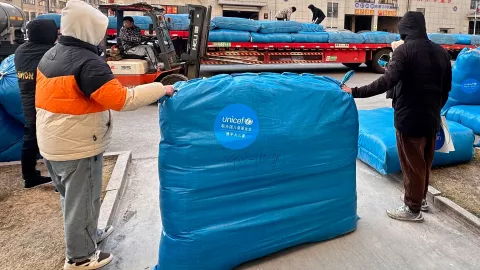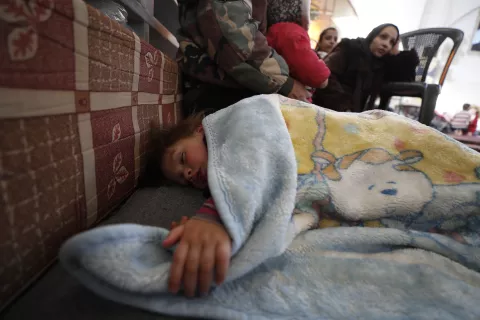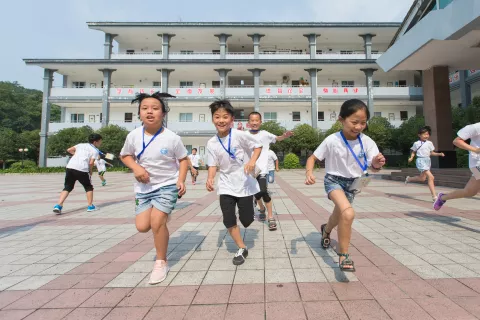Disaster and Risk Reduction for Children
- Available in:
- 中文
- English
Sendai, 13 March 2015 – From March 14 to 18, governments, donors, civil society organizations, UN agencies, and children and youth representatives will meet in Sendai, Japan, for the 3rd World Conference on Disaster Risk Reduction to review the HyogoFramework for Action and adopt a Post-2015 Framework for Disaster Risk Reduction across the globe, which seeks to achieve a substantial reduction in disaster losses in terms of lives and in terms of the social, economic and environmental assets of people, communities and countries.
The last 10 years have seen some of the largest disasters on record, affecting the lives of over 1.8 billion people and typically, half of those affected are children. Disasters and crisis often have a direct and disproportionate impact on women and children, depriving them of the basic rights such as safety and education that they are entitled to yet often unrealized. Under the UN Convention on the Rights of the Child (CRC) children have inalienable rights in all circumstances - including disasters when they are at their most vulnerable - and the right to participate in decisions that ultimately affect them. The CRC and disaster risk reduction are mutually reinforcing.
While floods, drought and earthquakes may not be prevented, it is generally agreed that actions can be taken to reduce the risk and loss caused by natural disasters. UNICEF has long recognized its crucial responsibility to integrate DRR across its work. In 2005, UNICEF committed to the HyogoFramework for Action and in 2006 became a formal member of the International Strategy for Disaster Reduction (ISDR) System.
Globally, China ranks among the top 10 countries suffering the greatest toll from disasters, both in terms of the total number of fatalities and in terms of economic costs from damages. In recent years, UNICEF has provided significant post-disaster support to China, including response to the devastating 2008 Wenchuan Earthquake, 2010 Southwest China Drought, 2010 Zhouqu County (Gansu) Mudslide as well as earthquakes in Sichuan, Yunnan, Qinghai and Gansu provinces.
Since the Wenchuan earthquake, UNICEF has worked with government counterparts to develop child-friendly and earthquake-resistant construction standards for schools; support materials development and training on preparedness, disaster risk reduction and resilience in schools; provide safe spaces and post-disaster psychosocial support to children through Child Friendly Spaces; supply clean water and sanitary latrines; strengthen maternal and child health worker capacity in disaster-affected areas; and disseminate nutritional supplements to the affected young infants and children. At the policy level, UNICEF contributed to improving disaster response policies, including to the National Guidelines on Emergency Health Relief for Children.
In the coming decades, climate-change related disasters are expected to affect nearly 175 million children every year, especially those who are already the most vulnerable and marginalized in the societies they live in. By integrating Disaster Risk Reduction into programming, focusing on equity, building partnerships with governments and learning from past experience, UNICEF strives to help reduce the risk of disasters and make children and communities more resilient.
Media contacts
About UNICEF
UNICEF works in some of the world's toughest places, to reach the world's most disadvantaged children. Across 190 countries and territories, we work for every child, everywhere, to build a better world for everyone. For more information about UNICEF and its work for children visit www.unicef.org.
| Visit UNICEF China website: www.unicef.cn Follow us on Sina Weibo: http://weibo.com/unicefchina Tencent Weibo: http://t.qq.com/unicef Wechat: unicefchina |




